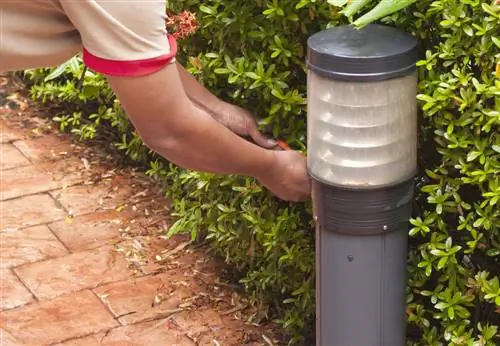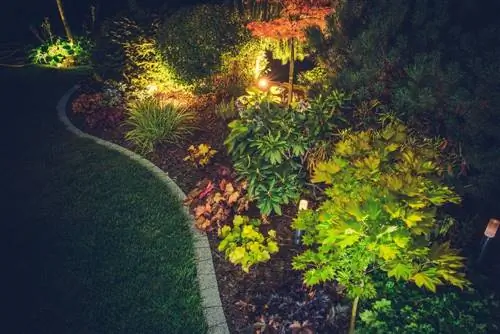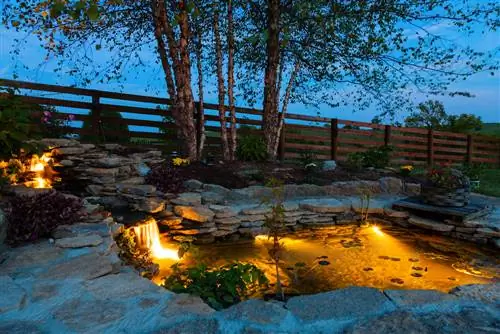- Author admin [email protected].
- Public 2023-12-16 16:46.
- Last modified 2025-06-01 06:02.
The installation of garden lighting with a 230-volt connection belongs in the hands of an electrical engineer. However, if you are planning to light your garden in a low-voltage range, you can carry out all the work yourself. This guide explains how to do it right.

How do I install low-voltage garden lighting myself?
To install low-voltage garden lighting yourself, you need a transformer, suitable cables and lights. Connect the transformer to a 230 volt socket, lay the connection cable along the lights and use cable clamps or a click system to connect the lights.
Why can I, as a layperson, install low-voltage lighting myself?
Recessed lights, spots and bollard lights in low-voltage systems are very popular with home gardeners because there is no need to hire a specialist to install them. A 230-volt socket in the house, garage or garden serves as a starting point. This is connected to one or more transformers to regulate the voltage for all connected lighting devices down to 12 volts.
If the transformers have protection class IP44, they can easily be positioned anywhere in the garden. It is not necessary to lay underground cables in a 60 cm deep trench. Cable damage is not dangerous for people or animals. The main cable of the garden lighting system from Luxform (€49.00 at Amazon), for example, extends up to 45 m into the garden.
Installing garden lighting - step-by-step instructions
Create your personal lighting plan in advance. To buy the right transformer, add up the wattages of the lamps. The sum of the wattages must not be greater than the associated transformer is capable of. The range of transformer sizes extends from 20 W to 300 W. How to install garden lighting professionally:
- Measure the distance between the transformer and the furthest away light
- Lay the connection cable starting from the transformer, past all the lamps to the last light
- Connect the individual lights to the main cable using cable clamps in the click system
Since low-voltage voltage poses no danger to children, adults and animals, the cables do not have to be buried deep in the ground. For aesthetic reasons, you can hide the cables under bark mulch, gravel or garden soil. Because installation is so easy, creative gardeners like to use low-voltage recessed spotlights to install them in wooden floorboards and run the power cable underneath the planks.
Tip
Is low-voltage lighting just as out of your interest as laying meter-long power cables? Then the innovative energy column comes in handy. Thanks to several power connections and a light element, the entire garden is supplied with energy from a strategically good point.






